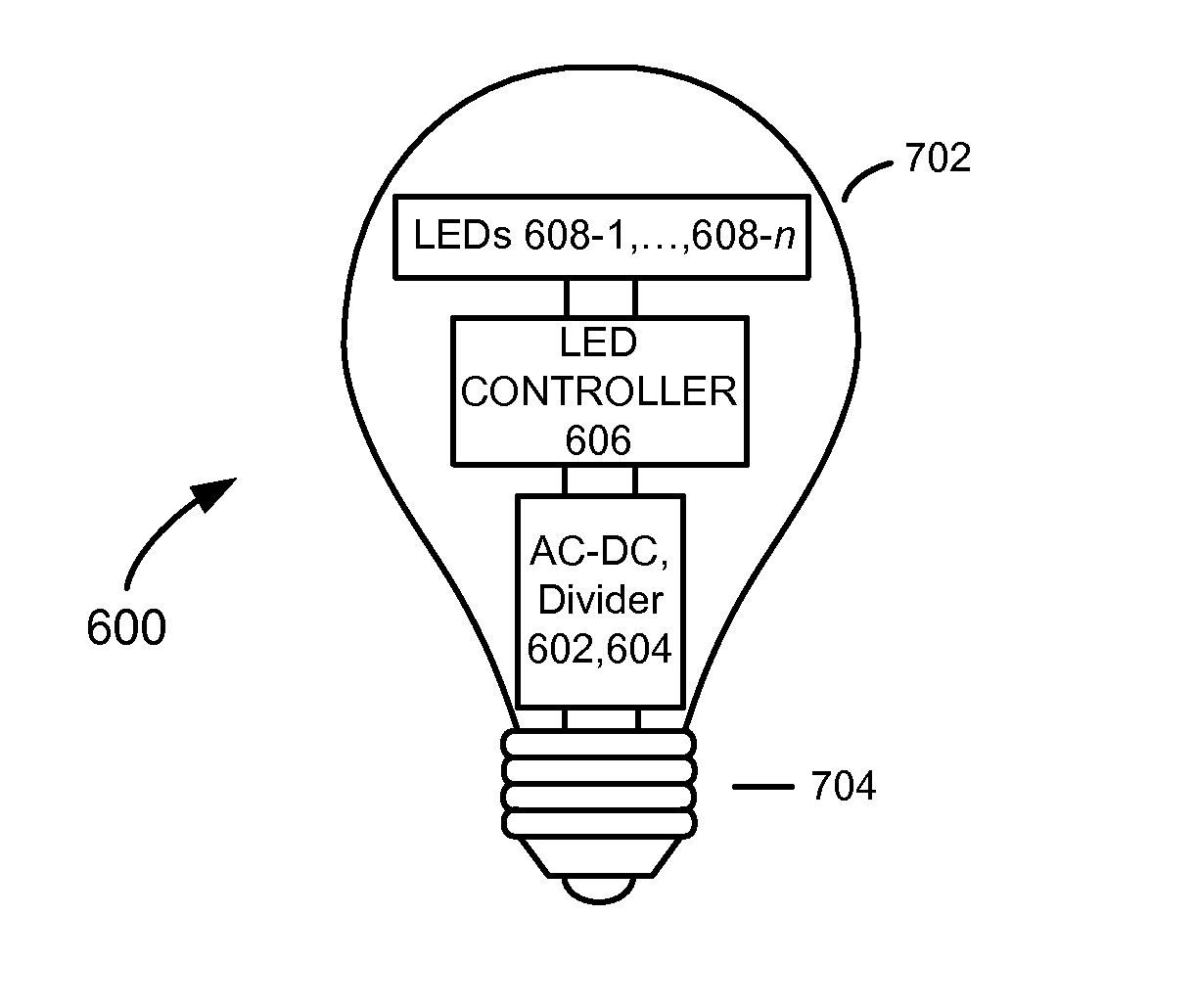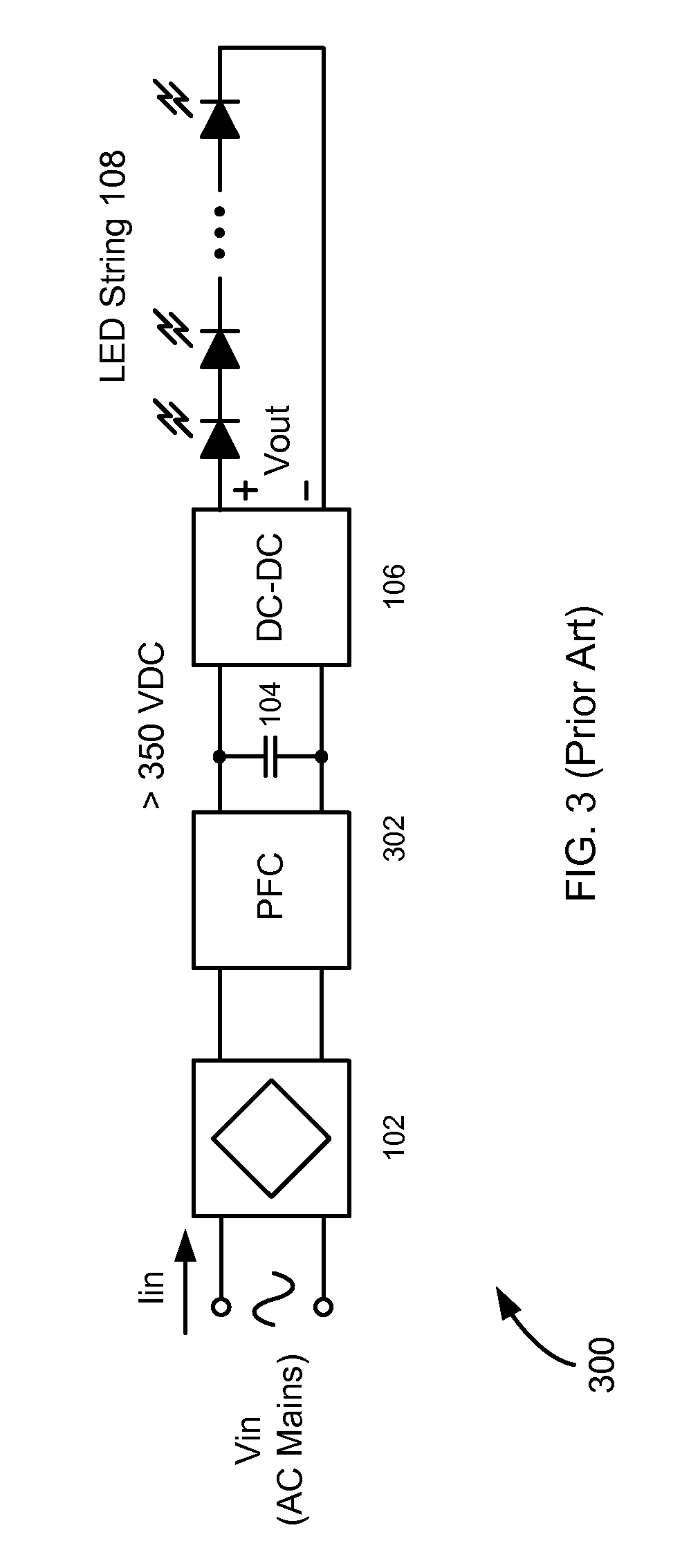Power Conversion and Control Systems and Methods for Solid-State Lighting
- Summary
- Abstract
- Description
- Claims
- Application Information
AI Technical Summary
Benefits of technology
Problems solved by technology
Method used
Image
Examples
Embodiment Construction
[0041]The exemplary embodiments of the present invention set forth below are described and illustrated in the context of solid-state lighting, particularly power conversion and control methods and systems for LED lighting. It is to be emphasized and understood, however, that the power conversion and control methods of the present invention are not limited to LED lighting applications; they are applicable to other lighting and non-lighting applications employing other types of loads, including solid-state (or non-solid-state) lighting devices other than LEDs, and devices that do not emit light but perform some other useful function.
[0042]Referring to FIG. 6, there is shown a light-emitting diode (LED) bulb 600, according to an embodiment of the present invention. The LED bulb 600 comprises power conversion and control circuitry 601 that includes an alternating current to direct current (AC-DC) converter 602, a divider 604, and an LED controller 606; and LEDs 608-1, 608-2, . . . , 608...
PUM
 Login to View More
Login to View More Abstract
Description
Claims
Application Information
 Login to View More
Login to View More - R&D
- Intellectual Property
- Life Sciences
- Materials
- Tech Scout
- Unparalleled Data Quality
- Higher Quality Content
- 60% Fewer Hallucinations
Browse by: Latest US Patents, China's latest patents, Technical Efficacy Thesaurus, Application Domain, Technology Topic, Popular Technical Reports.
© 2025 PatSnap. All rights reserved.Legal|Privacy policy|Modern Slavery Act Transparency Statement|Sitemap|About US| Contact US: help@patsnap.com



